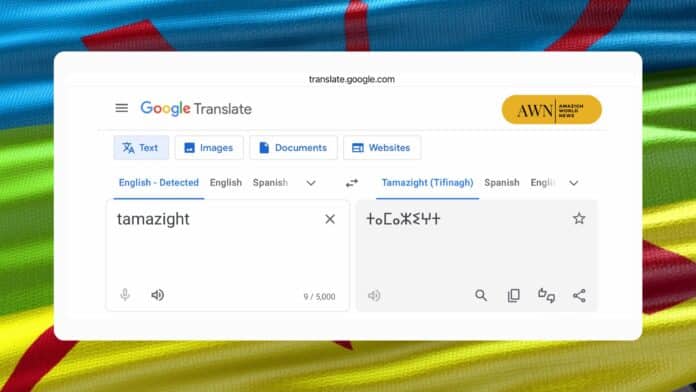Google has announced a significant update to its translation service, which now supports 110 languages, including Tamazight. This expansion is powered by the advanced PaLM 2 AI model, Google’s latest large language model (LLM) designed to enhance translation accuracy and fluency.
PaLM 2 represents a major leap in AI technology, providing more nuanced and precise translations by understanding the context and subtleties of different languages. This update not only broadens the scope of Google Translate but also underscores Google’s commitment to making its services more inclusive and accessible.
Among the newly added languages is Tamazight, an old language spoken by the Amazigh populations, native of North Africa. Tamazight features numerous dialects, but its written form is generally mutually understandable. Google Translate now supports both the Latin and Tifinagh scripts for Tamazight, ensuring that users can translate and understand content in this language more effectively.
The company noted the diverse usage levels of these languages. Some languages boast over 100 million speakers, while others are preserved despite lacking active speakers. Incorporating new languages involves considering regional varieties, dialects, and spelling standards, ensuring a comprehensive and accurate translation experience.
“We prioritize the most commonly used varieties of each language,” stated Issac Caswell, a software engineer at Google.
This update is part of Google’s broader initiative to support 1,000 languages through AI, a commitment they announced in 2022. The inclusion of these 110 languages represents over 614 million speakers, roughly 8% of the world’s population, highlighting the significant impact of this update.
The integration of these languages into Google Translate involves careful consideration of regional varieties, dialects, and spelling standards to ensure a comprehensive and accurate translation experience. “We prioritize the most commonly used varieties of each language,” explained Issac Caswell, a software engineer at Google. For example, the Romani language, which has many dialects across Europe, is represented in its Southern Vlax Romani form, with elements from Northern Vlax and Balkan Roman dialects.
The effort to include Tamazight in Google Translate was bolstered by a petition initiated by La Rando, a French organization led by Moroccan founder Karim Akachar, in 2019. The petition, which garnered over 36,579 signatures, urged Google to integrate Tamazight into its translation service. In March of the same year, the Google Translate team acknowledged the petition, stating it had been “taken into account.”
With these advancements, Google Translate is not only enhancing its utility for a wider audience but also playing a crucial role in preserving and promoting lesser-known languages.

